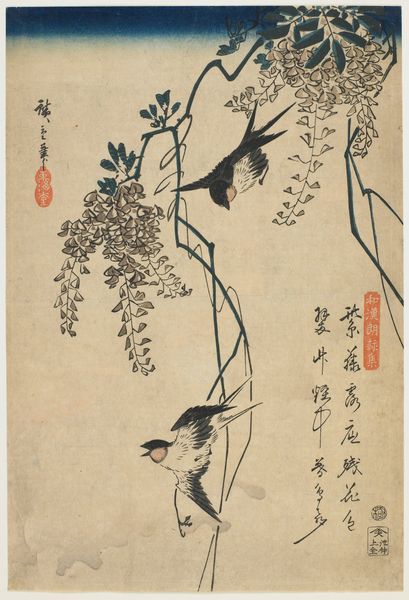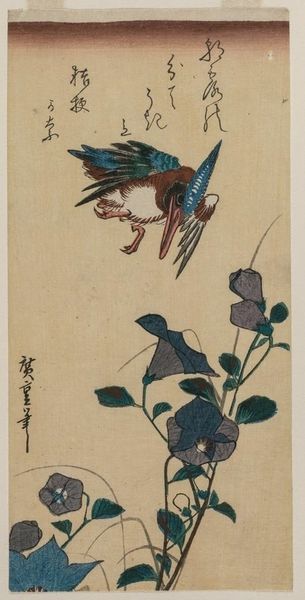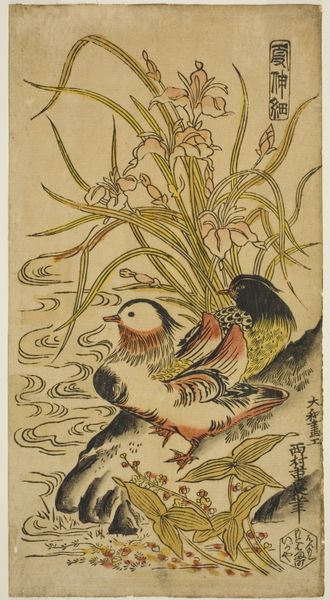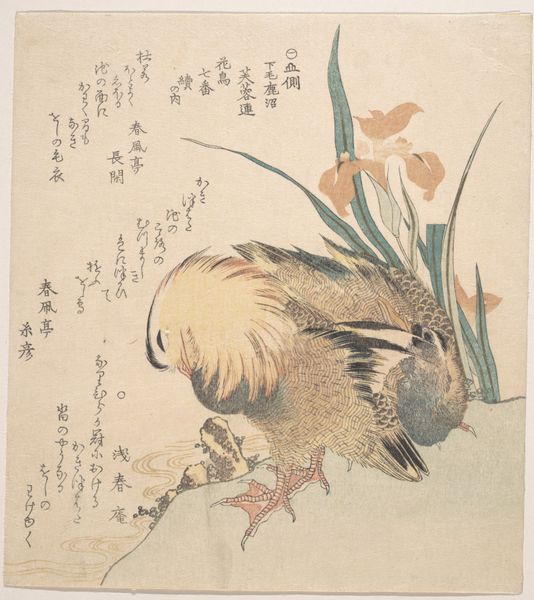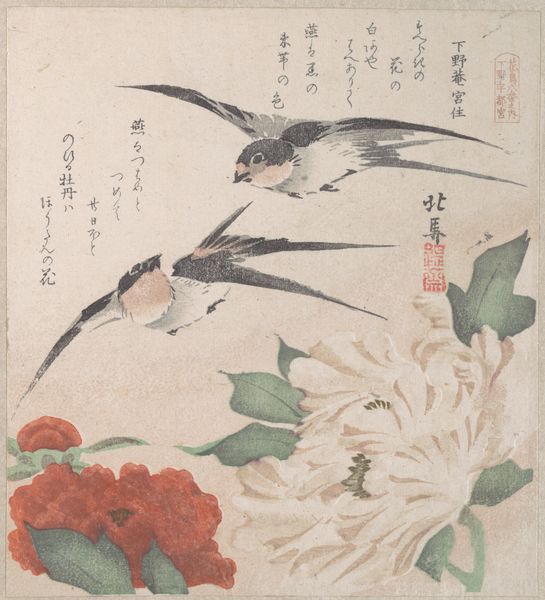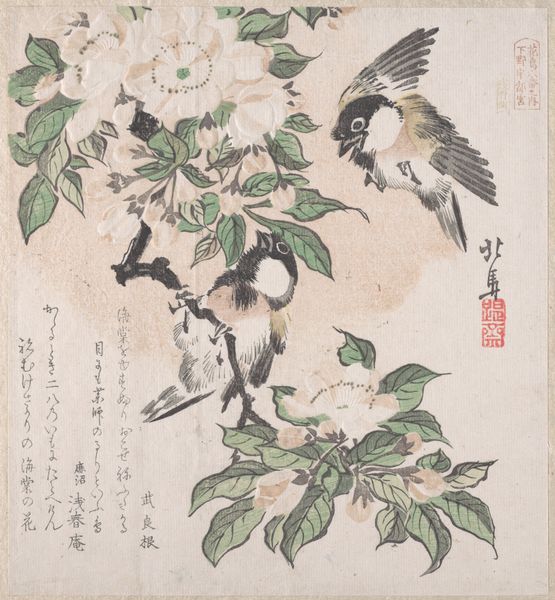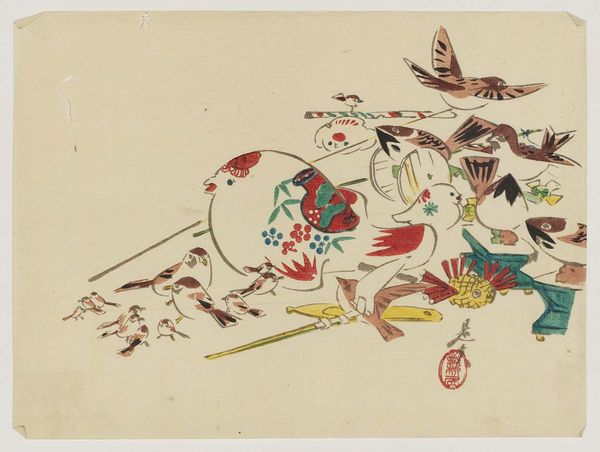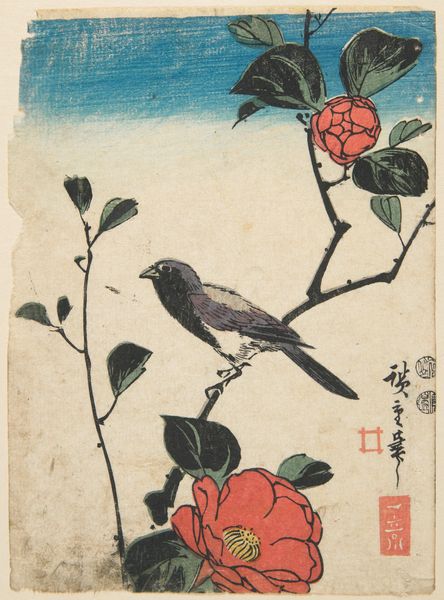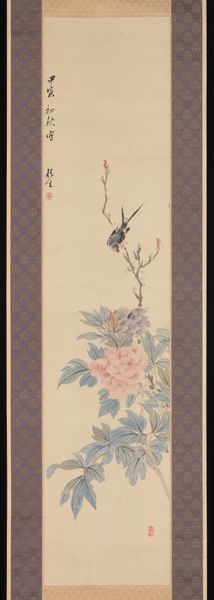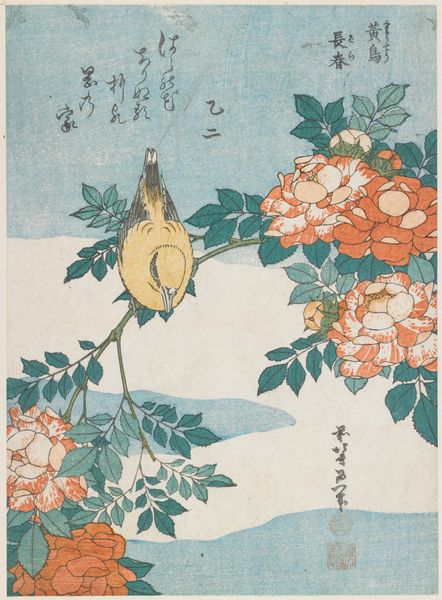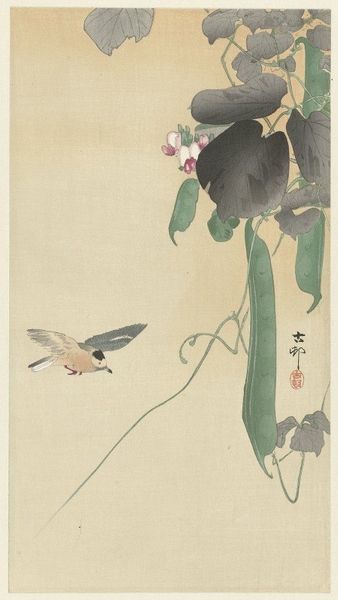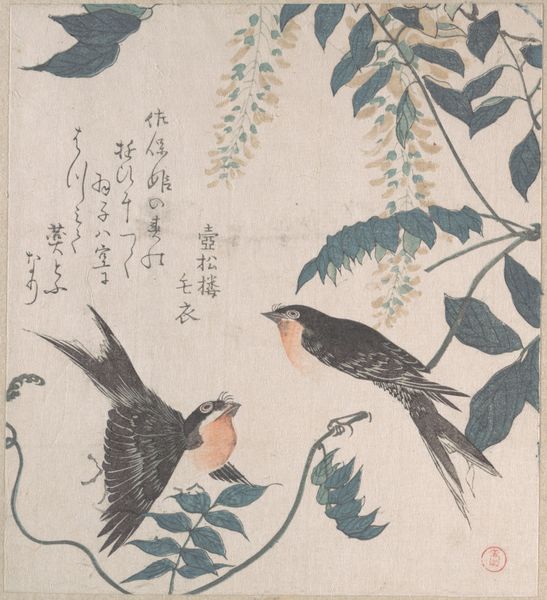
print, ink, color-on-paper, woodblock-print
#
aged paper
#
toned paper
#
ink paper printed
# print
#
asian-art
#
landscape
#
ukiyo-e
#
japan
#
figuration
#
ink
#
color-on-paper
#
woodblock-print
#
line
#
watercolour illustration
#
watercolor
Dimensions: 13 3/16 × 8 3/4 in. (33.5 × 22.2 cm) (image, vertical ōban)
Copyright: Public Domain
Curator: This delicate woodblock print before us is "Homing Swallows and Red Leaves" possibly from 1859 by Nakayama Sugakudo, currently residing here at the Minneapolis Institute of Art. Editor: Immediately, I’m struck by the elegance and the poignancy of it, a melancholic beauty tinged with nostalgia, perhaps. Curator: Interesting. From a production standpoint, the print employs ink and color on paper. These Ukiyo-e prints were designed for mass consumption. It wasn’t precious in its own time, even though now it feels rare. Editor: Mass production notwithstanding, there’s a very particular kind of intimacy, wouldn’t you say? The way the birds tilt toward each other, those leaves, somewhere between green and crimson… There's a sense of returning home, or striving to find it. Curator: The homing swallows definitely support this impression. Thinking about the labor, the block cutter, the printer, and then its distribution – each one affected the image and meaning of the print in very subtle but tangible ways. How were these circulated? What was their cost? Who bought them and why? Editor: The 'why' feels bigger than a simple economic equation. Ukiyo-e, in general, always strike me as… yearnings captured in ink. We might only know of their survival today. Think of those homes it adorned—those silent witnesses. Curator: True. They depict transient, fleeting moments that perhaps gave their owners pleasure—and, again, considering they’re made of humble materials that they could even discard when they were finished with it. This reflects a particular attitude towards material culture. Editor: Which makes their survival today all the more impactful! Each artifact— the paper, the inks, the wood— bearing the history and human presence—it's extraordinary that we have these windows now. Curator: Absolutely, to think about the relationship between these material remnants of daily life. Editor: A quiet testament, wouldn't you say? It leaves me with this deep curiosity of the past lives of the viewer to create some sort of communion with that world.
Comments
No comments
Be the first to comment and join the conversation on the ultimate creative platform.
